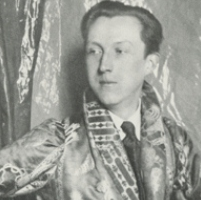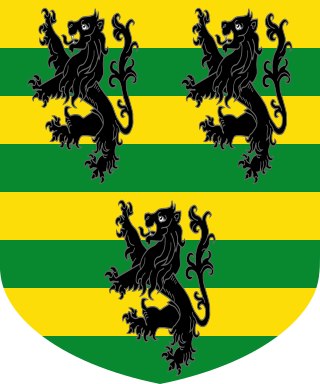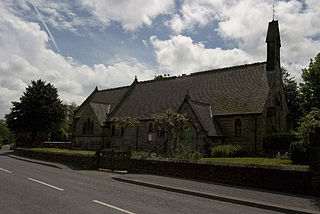
Dame Edith Louisa Sitwell was a British poet and critic and the eldest of the three literary Sitwells. She reacted badly to her eccentric, unloving parents and lived much of her life with her governess. She never married but became passionately attached to Russian painter Pavel Tchelitchew, and her home was always open to London's poetic circle, to whom she was generous and helpful.

Giovanni Battista Tiepolo, also known as GiambattistaTiepolo, was an Italian painter and printmaker from the Republic of Venice who painted in the Rococo style, considered an important member of the 18th-century Venetian school. He was prolific, and worked not only in Italy, but also in Germany and Spain.

Sir Sacheverell Reresby Sitwell, 6th Baronet, was an English writer, best known as an art critic, music critic, and writer on architecture, particularly the baroque. Dame Edith Sitwell and Sir Osbert Sitwell were his older siblings.

The Sitwells, from Scarborough, North Yorkshire, were three siblings who formed an identifiable literary and artistic clique around themselves in London in the period roughly 1916 to 1930. This was marked by some well-publicised events, notably Edith's Façade with music by William Walton, with its public debut in 1923. All three Sitwells wrote; for a while their circle was considered by some to rival Bloomsbury, though others dismissed them as attention-seekers rather than serious artists.

Sir Francis Osbert Sacheverell Sitwell, 5th Baronet CH CBE was an English writer. His elder sister was Edith Sitwell and his younger brother was Sacheverell Sitwell. Like them, he devoted his life to art and literature.

Renishaw Hall is a country house in Renishaw in the parish of Eckington in Derbyshire, England. It is a Grade I listed building and has been the home of the Sitwell family for nearly 400 years. The hall is southeast of Sheffield, and north of Renishaw village, which is northeast of Chesterfield.

Renishaw is a village in the district of North East Derbyshire in England. It is in the civil parish of Eckington.

Palazzo Labia is a baroque palace in Venice, Italy. Built in the 17th–18th century, it is one of the last great palazzi of Venice. Little known outside of Italy, it is most notable for the remarkable frescoed ballroom painted 1746–47 by Giovanni Battista Tiepolo, with decorative works in trompe-l'œil by Gerolamo Mengozzi-Colonna.

Sebastiano Ricci was an Italian painter of the late Baroque school of Venice. About the same age as Piazzetta, and an elder contemporary of Tiepolo, he represents a late version of the vigorous and luminous Cortonesque style of grand manner fresco painting.

Villa Pisani at Stra refers to the monumental, late-Baroque rural palace located along the Brenta Canal at Via Doge Pisani 7 near the town of Stra, on the mainland of the Veneto, northern Italy. This villa is one of the largest examples of Villa Veneta located in the Riviera del Brenta, the canal linking Venice to Padua. The patrician Pisani family of Venice commissioned a number of villas, also known as Villa Pisani across the Venetian mainland. The villa and gardens now operate as a national museum, and the site sponsors art exhibitions.

Sir George Reresby Sitwell, 4th Baronet was a British antiquarian writer and Conservative politician who sat in the House of Commons between 1885 and 1895.

The Sitwell Baronetcy, of Renishaw in the County of Derby, is a title in the Baronetage of the United Kingdom. It was created on 3 October 1808 for Sitwell Sitwell, Member of Parliament for West Looe. The Sitwell family had been ironmasters and landowners in Eckington, Derbyshire, for many centuries.

This is a list of Sheriffs of Derbyshire from 1567 until 1974 and High Sheriffs since.
Sir Sacheverell Reresby Sitwell, 7th Baronet was the head of the Sitwell family, and owner of Renishaw Hall, Derbyshire.

Horsley Woodhouse is a village and civil parish in the Amber Valley district of Derbyshire, in the East Midlands of England. The population of the civil parish taken at the 2011 Census was 1,219. It is situated on the A609 road between the neighbouring villages of Kilburn and Smalley. The nearest towns are Heanor, situated 2.6 miles (4.2 km) northeast, and Belper, 3.2 miles (5.1 km) northwest, while the city of Derby is located about 6 miles (9.6 km) south-southwest.
George Sitwell, the eldest son of George Sitwell (1569–1607) and Mary Walker, was a 17th-century landowner and ironmaster who was born at Eckington in Derbyshire and baptized there on 15 March 1601. He built Renishaw Hall in Derbyshire in 1626. His company mined, forged, and rolled iron for use in Britain and overseas. It exported a complete rolling mill to the West Indies.
Sir George Reresby Sacheverell Sitwell, 8th Baronet is a British businessman.

Anne Blencowe or Anne, Lady Blencowe, née Anne Wallis was a British compiler of recipes. Her book was first published more than 200 years after her death.
David Stuart Horner was a crime fiction novelist and the longtime partner of Osbert Sitwell.
William Ronald Sacheverell Sitwell is a British editor, writer and broadcaster. He is also a restaurant critic for The Daily Telegraph and the former editor of Waitrose Food.














